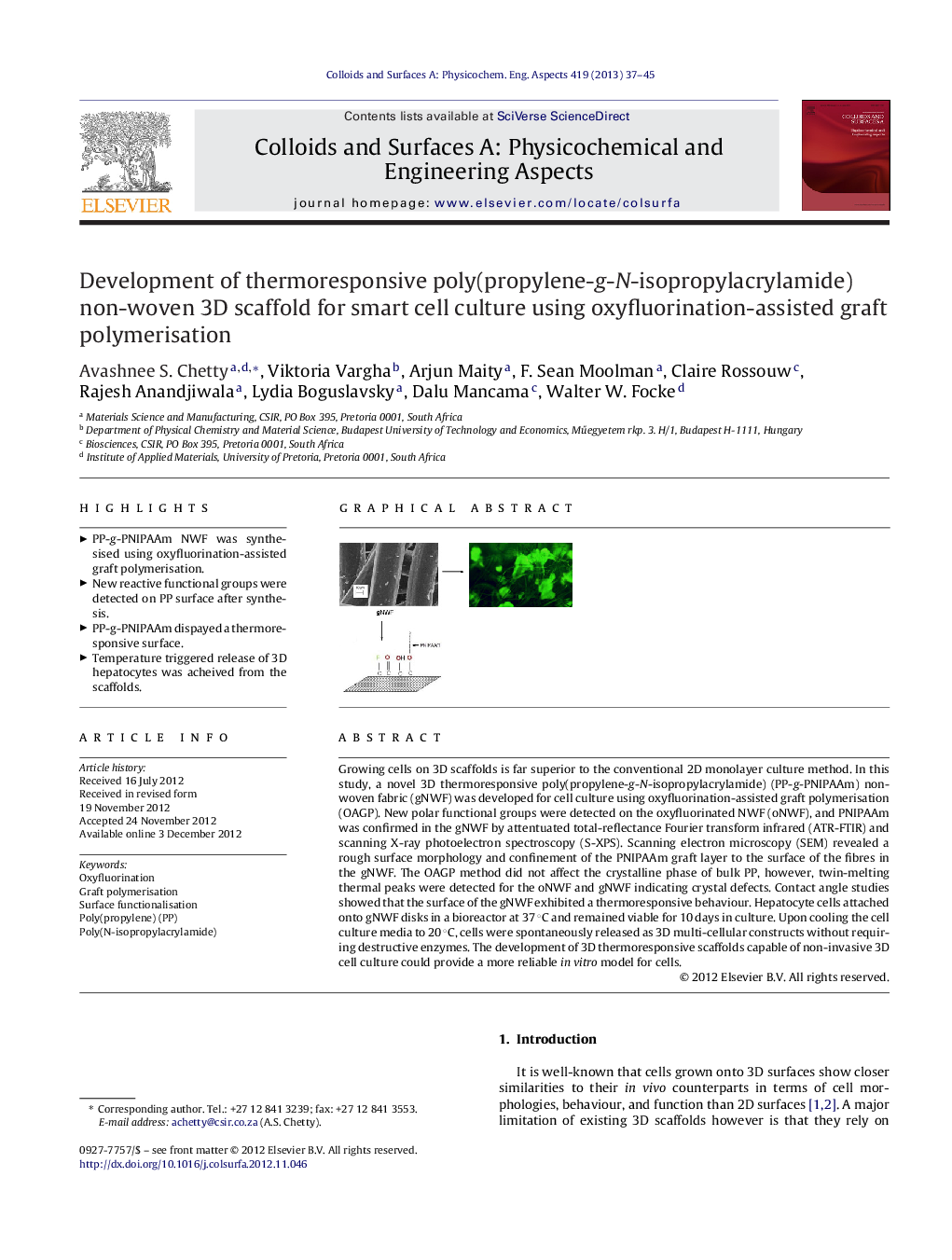| Article ID | Journal | Published Year | Pages | File Type |
|---|---|---|---|---|
| 593764 | Colloids and Surfaces A: Physicochemical and Engineering Aspects | 2013 | 9 Pages |
Growing cells on 3D scaffolds is far superior to the conventional 2D monolayer culture method. In this study, a novel 3D thermoresponsive poly(propylene-g-N-isopropylacrylamide) (PP-g-PNIPAAm) non-woven fabric (gNWF) was developed for cell culture using oxyfluorination-assisted graft polymerisation (OAGP). New polar functional groups were detected on the oxyfluorinated NWF (oNWF), and PNIPAAm was confirmed in the gNWF by attentuated total-reflectance Fourier transform infrared (ATR-FTIR) and scanning X-ray photoelectron spectroscopy (S-XPS). Scanning electron microscopy (SEM) revealed a rough surface morphology and confinement of the PNIPAAm graft layer to the surface of the fibres in the gNWF. The OAGP method did not affect the crystalline phase of bulk PP, however, twin-melting thermal peaks were detected for the oNWF and gNWF indicating crystal defects. Contact angle studies showed that the surface of the gNWF exhibited a thermoresponsive behaviour. Hepatocyte cells attached onto gNWF disks in a bioreactor at 37 °C and remained viable for 10 days in culture. Upon cooling the cell culture media to 20 °C, cells were spontaneously released as 3D multi-cellular constructs without requiring destructive enzymes. The development of 3D thermoresponsive scaffolds capable of non-invasive 3D cell culture could provide a more reliable in vitro model for cells.
Graphical abstractFigure optionsDownload full-size imageDownload as PowerPoint slideHighlights► PP-g-PNIPAAm NWF was synthesised using oxyfluorination-assisted graft polymerisation. ► New reactive functional groups were detected on PP surface after synthesis. ► PP-g-PNIPAAm dispayed a thermoresponsive surface. ► Temperature triggered release of 3D hepatocytes was acheived from the scaffolds.
